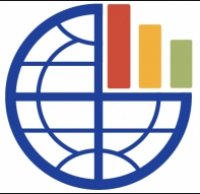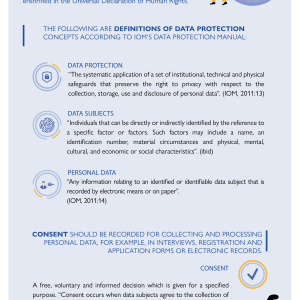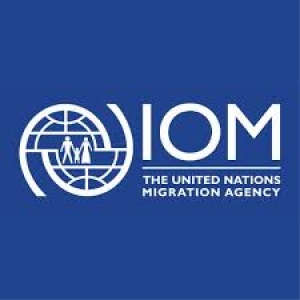In his report, former Special Representative of the Secretary-General (SRSG) on Migration Mr. Peter Sutherland called for improving data for fact-based migration policies and accountability by offering various avenues to get to better data, monitoring and reporting on migration (recommendation no. 12). He also called for the establishment of a financing facility for migration to ensure that all States are equipped to fulfil the migration-related commitments emanating from the 2030 Agenda and Global Compact for Migration, a proposal that was endorsed by the Special Rapporteur on the human rights of migrants in his recent report.
While some basic migration concepts have been well defined for purposes of statistical measurement, some terms used in today’s migration policy discussions, such as return migration, circular migration or diaspora, remain poorly defined. Defining and understanding basic concepts employed in measuring migration is essential for an informed, fact-based discussion of the realities of international migration. This blog provides five key recommendations to improve migration data based on the main data sources and indicators
Sources of Migration Data
Click on the below infographic to make it interactive.
Population censuses
Although conducted infrequently, population censuses are the lynchpin in the production of informative, comparable and reliable data on international migration and the characteristics and well-being of migrants and their families. Most censuses include a question on country of birth and/or a question on country of citizenship, which can be used to measure the stock of migrants residing in the country and to disaggregate other relevant data by migratory status. Some censuses also include a question regarding the date or year of arrival, which can be used to derive a rough estimate of recent flows. Few censuses include questions on a person’s motivation to migrate. Such information is required to understand the reasons or drivers of migration (work, family, settlement, education, asylum, etc.). In many countries, censuses are essential as a sampling framework for household surveys, including on migration.
Recommendation 1: Countries are strongly encouraged to include migration-relevant questions in their census of the 2020 round and to ensure timely analysis and dissemination of results with recommended disaggregation and cross-tabulation in accordance with international recommendations.
Administrative sources
Most countries have administrative procedures to register foreign citizens. Examples include systems to record the application, issuance and renewal of visa, residence, work and exit permits, as well as applications and decisions on requests for asylum, regularization and naturalization. These data sources provide valuable information on the number of foreign citizens authorized to enter and stay, providing an estimate of migratory flows, information on the reason for migration as well as on integration.
However, few countries systematically disseminate data from relevant administrative records or have automated registers that allow for speedy tabulation of relevant information. The quality of the administrative data on remittance flows, as reported by national banks, is uneven.
Recommendation 2: Countries are strongly encouraged to leverage the use of administrative records to produce migration-related statistics, and systematically disseminate such data in accordance with international recommendations.
Household surveys
Surveys are critical for understanding the drivers and impacts of migration and for identifying which migrants are in the most vulnerable situations. Surveys are also often the only source to assess the economic and social integration of migrants in host countries. At the same time, few international survey programmes (demographic and health surveys, multi-indicator cluster surveys, labour force surveys or living standards measurement surveys) include questions on migratory status or a migration module.
Recommendation 3: Existing household survey programmes should, as a minimum, include a question on the country of birth and country of citizenship. Where relevant, a migration module should be added. Once collected, survey data should be disseminated through public-use microdata files to facilitate disaggregation by migratory status.
"Big data"
Large amounts of data are continuously generated by mobile devices, electronic financial transactions or webbased platforms, which are often owned and maintained by the private sector. Several studies have shown that “big data” can be used to capture the movements of displaced people, temporary migration, remittance flows, regular and irregular flows and efforts to combat trafficking. While it is recognized that the use of “big data” comes with significant challenges, the potential for using such data to better understand migration dynamics has yet to be fully explored. To leverage “big data” as a meaningful source of information for migration analysis, national statistical offices need to work with all relevant stakeholders, including telecom company, IT providers, academia and relevant government agencies, to manage the process of data production.
Recommendation 4: National statistical agencies should create partnerships with the private sector and other relevant stakeholders to leverage “big data” for measuring migration, understanding the drivers and consequences of migration and informing migration policy.
Migration-related indicators
The Sustainable Development Goals (SDGs) include several migration-related targets. Most notably, SDG target 10.7 calls on countries to facilitate safe, orderly, regular and responsible migration by implementing planned and well-managed migration policies. This presents a major data challenge as there is no global survey of international migration policies and national migration governance frameworks.
Relevant SDG targets on poverty, health, education, etc. require disaggregation by migratory status to ensure that the different experiences of migrants and non-migrants can be analysed. As few countries have the know-how, the tools or the resources to collect and analyse the required information, national statistical and administrative systems that produce data for compiling migration-related indicators should be strengthened.
Recommendation 5: Countries should develop a comprehensive strategy to enhance national capacities for the collection and use of migration-related data and indicators to support evidence-based policymaking. The international community should support such strategies through capacity-building, financial support and technical assistance.
Way forward
To address current data gaps, to assess key migration trends and to meet the demand for data to monitor the implementation of migration-related commitments, a global programme for building national capacities to collect, disseminate and analyse migration-related data is urgently needed.
The global programme should:
- provide dedicated training for government officials;
- address existing and explore new sources of migration-related data;
- promote disaggregation of data by migratory status;
- encourage international actors to collaborate in building national capacities;
- be aligned with broader efforts to promote a “development data revolution”;
- be consistent with the global compact for refugees;
- strengthen the role of actors at the regional level; and
- be reviewed by the United Nations Statistical Commission on a regular basis.
Funding for the global programme is critically important. To this end, it is recommended that the global financing facility, proposed by SRSG Sutherland, includes dedicated funding to improve international migration data.
The second International Forum on Migration Statistics (IFMS), organized by IOM, OECD and DESA in Cairo on 19-21 January 2020, is expected to serve as a space for producers and consumers of migration-related data to share data, discuss data needs, identify data gaps and highlight needs for training and capacity-building. The IFMS could become part of the implementation strategy of the Global Compact for Safe, Orderly and Regular migration.
This blog post is part of the International Forum on Migration Statistics (IFMS) series on the Global Migration Data Portal. Find more information about the IFMS.








